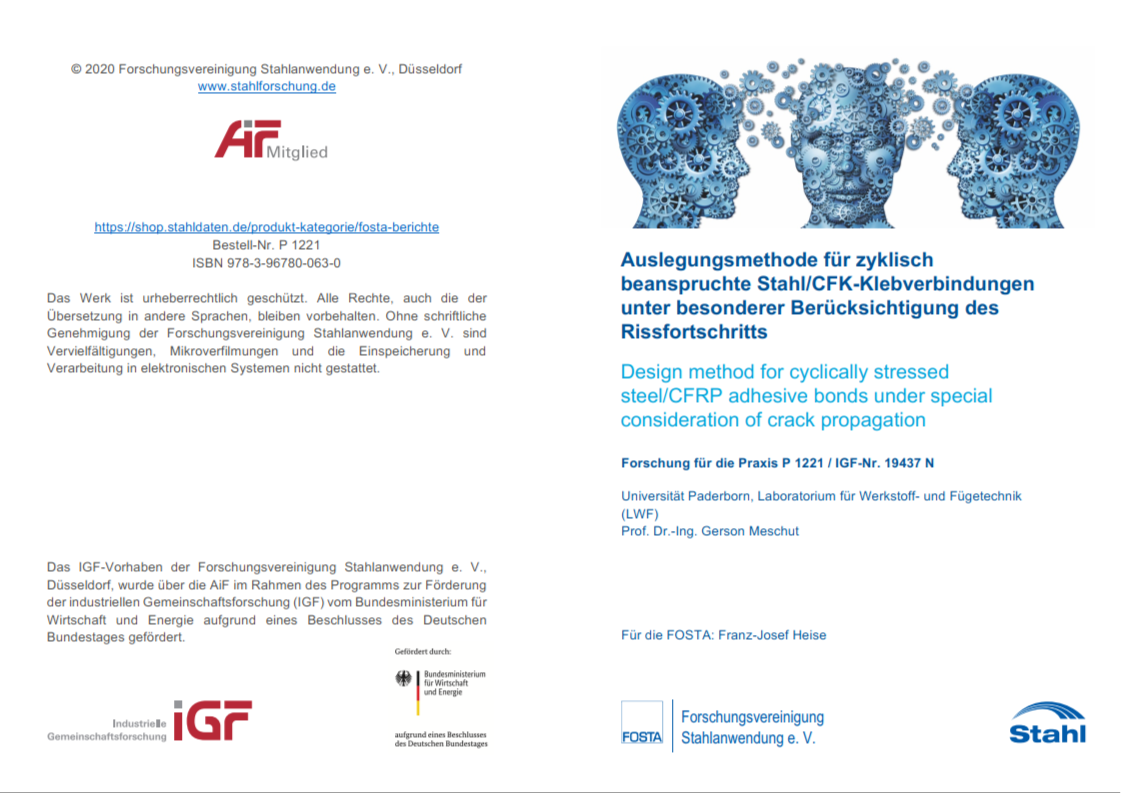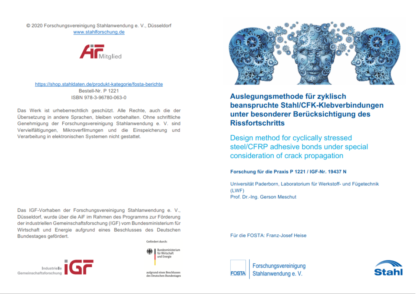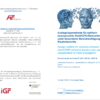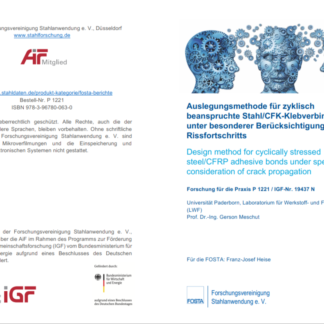Description
P 1221 – Design method for cyclically stressed steel/CFRP adhesive bonds under special consideration of crack propagation
Due to its specific properties and low weight, the lightweight construction material CFRP (carbon fiber reinforced plastic) is a popular material that enables innovative constructions to meet high demands in terms of design, safety and comfort and, last but not least, realizes more efficient construction methods in the transport sector by reducing weight. The relatively high costs of this material require the economic use of CFRP where its specific lightweight construction potential can be effectively exploited. In combination with high-strength steels, lightweight and safe structures can be produced economically. Adhesive bonding technology is a versatile and at the same time material-compatible joining technology for fiber composites in mixed construction. The design of steel/CFRP adhesive joints requires precise knowledge of the joint and failure behavior, especially under changing load types and speeds. The aim of this research project is the qualification of a test concept for the design of steel/CFRP adhesive joints in different branches of industry.
The test concept used is based on rigid steel joining parts with glued-on CFRP coupons, which allows the adhesive layer to be stressed as homogeneously as possible and above all uniaxially. This allows the mutual influences of the CFRP and the adhesive on the joint to be investigated. The basic tests are carried out quasi-statically. Based on this, strain rate-dependent tests and tests under fatigue loading on steel/steel and steel/CFRP adhesive joints are carried out and compared with the reference tests. This is intended to provide a comprehensive understanding of the mechanical properties and failure behavior. In addition to continuum mechanical tests under the main stress types tension and shear, fracture mechanical test specimens are developed which are used to investigate the crack propagation behavior and to detect nterphase-specific effects. The testing of a component-like specimen completes the experimental investigations.
The knowledge gained is finally combined in a process model for the testing and design of steel/CFRP bonded joints. In addition to the specimen production, testing and test interpretation, the process model should also contain information on the design of the adhesive joint, which can be derived depending on the epoxy resin and polyurethane adhesives used and the underlying stress.
Published in:
2020
Authors:
Prof. Dr.-Ing. G. Meschut




